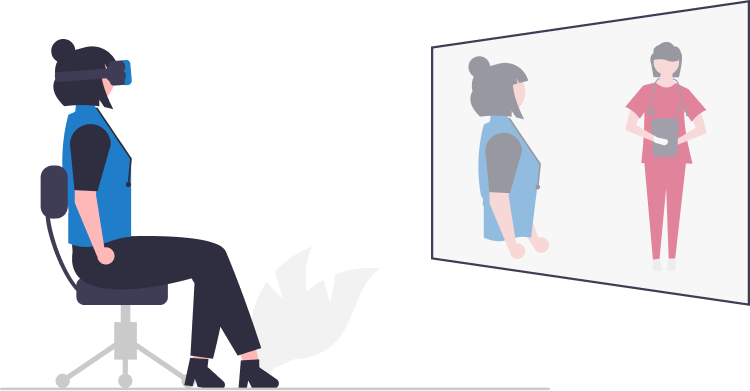When learning a life-saving skill like CPR, there’s far more to it than the steps themselves. To help you understand CPR best practices, where national and international guidelines come from, and how to get the highest quality training and certification, we’ve put together this definitive guide to CPR training.
- Learn About CPR
- CPR Guidelines & Best Practices
- How to Do CPR
- CPR Training Buying Guides
- CPR Certification Renewal
- CPR FAQs
Learn About CPR
Cardiopulmonary resuscitation (CPR) is a life-saving skill that everyone should have some fundamental knowledge of. Not knowing the proper techniques can be dangerous — and even fatal in some cases.
While we highly recommend taking a basic CPR course to get thorough training on handling various emergency situations like choking, drowning, and cardiac arrest, having a basic understanding of CPR is better than nothing when someone’s life is on the line. To help you develop your understanding of CPR, its uses, and the techniques, we’ve put together this introduction to CPR for you.
What Does CPR Stand For?
Cardiopulmonary resuscitation, or CPR, is a technique used to restore blood circulation and breathing in an individual who has stopped breathing and whose heart has stopped beating. Knowing how to properly administer CPR can help save a life in a matter of minutes.
The History of CPR
The earliest known reference to CPR-like techniques can be found in the writings of the ancient Egyptians, who used a combination of chest compressions and mouth-to-mouth ventilation to revive drowned victims. The technique was also used by the ancient Greeks and Romans but was not widely practiced or considered a formal medical procedure.
So, when was CPR invented, exactly?
While we can’t trace the invention of CPR to an exact date, we can trace variations of its use back to the 18th century. The modern version of the technique — that we know and use today — however, was developed in the 1960s.
Who Invented CPR
According to the American Heart Association (AHA), the earliest recorded instance of CPR techniques that are still around today dates back to 1732, when Scottish surgeon William Tossach used mouth-to-mouth to resuscitate a suffocated miner. In 1740, the French Academie de Sciences officially took a stance recommending the procedure for drowning victims.

In 1775, a little further east, Danish veterinarian Peter Abildgaard discovered that shocking a chicken’s lifeless body could restart its heartbeat. This is the first evidence of techniques still used today with modern AED technology.
Variations of CPR
The first thing to know about CPR is that there are several types — each with its own benefits and uses, depending on the emergency situation and the person performing CPR. When used appropriately, CPR can provide lifesaving help to victims of cardiac arrest, drowning, and drug overdoses.
Hands-Only
Hands-only CPR, the most common type of CPR, involves placing both hands on the center of the patient’s chest and applying pressure to keep the blood circulating in a person whose heart has stopped beating. Chest compressions are one of the most important aspects of CPR.
Rescue Breathing
Rescue breathing involves providing breaths to the patient in order to keep their blood oxygenated and should be given at a rate of one breath every five to six seconds. This technique is typically used in combination with chest compressions.
Automated External Defibrillator
Automated external defibrillators (AEDs) are machines that can be used to deliver an electrical shock to the heart to restore a normal heart rhythm. They’re recommended for use by trained medical professionals and can be used in combination with chest compressions and rescue breathing.
Laws Affecting CPR
CPR is a life-saving skill, but the fear of facing legal repercussions can make people, and even sometimes medical professionals, hesitate to act in an emergency. CPR laws make a difference when it comes to providing emergency care by protecting the people who perform CPR and first aid.

Read on to learn more about the most important CPR laws that exist to protect health care professionals and laypersons.
The Good Samaritan Act
The Good Samaritan Act protects individuals who step in to provide assistance during an emergency from liability. And while each state has its own laws, fundamentally, if you act in good faith, a victim or his or her family can not hold you liable for any potential harm that occurs as a result of your help.
Do Not Resuscitate Orders
A do-not-resuscitate, or DNR, order is a patient’s order to not be resuscitated in the event that life-saving measures are required following a cardiac arrest or other life-threatening event.
CPR Devices, Tools & Accessories
A CPR tool is designed to help make the process of administering CPR easier and more efficient. CPR tools come in a variety of shapes and sizes and can be used for both adults and children.
These tools are usually composed of several components, each with its own purpose, and can be used in different situations. Here are the most common CPR tools on the market today.
- CPR face shields & barriers are used to protect the rescuer from exposure to potential infections from the victim, according to Verywell Health. They come in a variety of sizes and shapes and are designed to fit snugly over a person’s face.
- Resuscitation bags are designed to provide a steady flow of air to a person who is not breathing, according to UW Health. Each one is equipped with a valve that can be adjusted to provide a controlled amount of air. The use of a resuscitation bag is important as it helps ensure that the person is receiving the right amount of oxygen.
- A CPR manikin is a dummy on which rescuers can practice their techniques and become familiar with the process of administering CPR. It is designed to look and feel like a real person and is often used in CPR training courses.
The Future of Learning CPR
In its early days, CPR was only teachable in person. Today, though, organizations can choose between in-person, online, blended, and most recently, virtual reality (VR) CPR training.

CPR training has become more sophisticated with the help of technology. The days of waiting for an instructor to pop in a VHS tape are over. Today, you can find comprehensive online CPR training that uses interactive visuals and simulated emergencies to make the learning experience more immersive.
Smartphones are also making a difference by enabling people to learn CPR from anywhere. Apps with step-by-step guidance can enhance knowledge retention, and VR CPR training gives learners an opportunity to practice hands-on techniques using 3D simulations without having to attend an in-person class.
With that said, as technology progresses and new VR CPR training tools emerge, so do the potential challenges they pose.
CPR Guidelines & Best Practices
CPR guidelines are established by ILCOR, an international group that meets every five years to review the most up-to-date scientific data on how to effectively provide CPR in a way that increases survival rates. The AHA is then tasked with relaying this information to the U.S., so that organizations can structure their training around the most current guidelines.
CPR requirements, on the other hand, vary greatly by profession and state. For example, teaching is fairly standardized across the nation, with clearly identified educational training; however, the CPR certifications for teachers can vary greatly. Some states leave the decision to require CPR certification, as well as other training, up to the individual school districts.
Where Do CPR Guidelines Come From?
The International Committee on Resuscitation (ILCOR) is an international organization that meets every five years to assess the current best practices around CPR.
At these meetings, studies are shared amongst the committee and then are deliberated to assess the most evidence-based and effective methods for conducting CPR. These guidelines are published and become the guiding principles that inform professionals and civilians alike about the newest standards for CPR.
The AHA is the United States’ liaison to ILCOR and is responsible for updating the CPR standards. Its role is to provide and pass along guidelines for best practices surrounding CPR set by ILCOR.
Following ILCOR meetings, the AHA publishes its latest guidelines and best practices for providing CPR, which can then be accessed on the AHA website. CPR guidelines are published in 17 different languages and updated every five years — most recently, in 2020.
Each time the AHA publishes the latest CPR guidelines, companies that provide CPR training must review and update their practices.
2020 CPR Guideline Updates: What’s New?
CPR guidelines are developed every 5 years with the latest updates published in 2020. Updates from the AHA 2020 guidelines include:
- Quick response: Lay rescuers should be encouraged to perform CPR immediately if cardiac arrest is presumed. While many people hesitate, afraid of causing harm if the person is not actually suffering cardiac arrest, failing to administer chest compressions poses a much greater threat.
- Support for cardiac arrest survivors and rescuers: In addition to medical assessment and treatment for survivors of cardiac arrest, the 2020 updates recommend support and treatment options for the mental and emotional health of both survivors and their caregivers.
- Education: The AHA 2020 guidelines include numerous education and training recommendations, including self-directed training when no teacher-led training is available and the use of virtual reality and gamified learning.
- Technology use: While the use of smartphone technology to alert bystanders of nearby individuals in need of CPR has yet to be studied in the U.S., it is now considered a reasonable option and recommended for further study.
How to Do CPR
You never know when a situation may arise where someone needs immediate help. According to the Centers for Disease Control and Prevention, 7 out of 10 cardiac arrests happen at home. By knowing how to perform just seven steps to CPR, you could potentially save a family member, friend, or even a stranger’s life.

CPR Steps
Here are seven easy but life-saving steps to CPR.
- Check the scene for safety. Before starting CPR, make sure that the area around you is safe for both you and the victim.
- Check for responsiveness. Tap the victim’s shoulder to check if he or she is responsive. If the victim does not respond, shout for help and call emergency services.
- Check for breathing. Carefully tilt the victim’s head back and check for breathing by placing your ear close to the victim’s mouth and nose. If the victim is not breathing or is gasping for air, start CPR immediately.
- Open the airway. Once you have determined that the victim is unresponsive, slowly tilt their head back and lift their chin to open their airway.
- Begin chest compressions. Kneel beside the victim, place the heel of one hand on the center of the victim’s chest and the other hand on top, interlacing your fingers. Lean over the victim, keep your arms straight, and press down on the chest about two inches. Continue at a rate of 100-120 compressions per minute.
- Perform rescue breaths. After 30 compressions, give two rescue breaths by tilting the victim’s head back again and lifting their chin. Pinch the victim’s nose shut, and seal your mouth around theirs. Blow into their mouth for about one second, until you see their chest rise.
- Continue CPR. Cycle between chest compressions and rescue breaths until emergency medical personnel arrive or the victim starts to show signs of movement. Do not stop CPR unless you are relieved by trained medical personnel or the victim starts to move.
CPR for Pregnant Women
In their third trimester, a pregnant woman has likely abandoned sleeping on her back due to increased pressure and discomfort. This remains true for transporting a pregnant woman on a gurney, trolly, or bed. Transporting the woman on her side removes unneeded pressures and decreases the associated risks.
While the basic arrangement of getting a cardiac arrest victim flat on their back is still the ideal starting place, the act of laying a pregnant woman on her back complicates the process of getting blood flowing. In short, with a 10-30 pound uterus laying atop the aorta and inferior vena cava, the additional pressure prevents blood flow.
This position of the uterus interfering with normal blood flow pathways can be remedied with a left uterine displacement. This is where another person can assist the responder providing CPR by grabbing the stomach at the right hip with open palms and fingertips about even with the belly button and pushing gently, but firmly, to the left.
CPR Training Buying Guides
If you work in a profession where knowing CPR is a necessity, it’s important to find a learning method that works best for you. Whether you’re a visual, auditory, or kinesthetic learner, there’s a way for you to learn CPR effectively.
Here are some tips on how to find the right learning method for you.
Online, Blended & Classroom Training: Which Is Better?
It’s generally understood that each learner has a preferred method or modality of how they learn best – and this applies to how to learn CPR best, as well.
Visual learners tend to benefit from seeing how something is done and following along, so learning how to perform CPR can be most effective when shown through pictures or video. Visual learners also have the benefit of replaying videos when they choose online and blended programs.
Audio learners do better when they are taught by hearing the information presented. For them, reciting how to provide a person in need with CPR would be helpful to retain the knowledge. Audio learners would do well with blended and online programs because they are able to watch, pause, rewind, and replay videos as needed.
Kinesthetic learners tend to benefit from an experiential training modalities such as demonstrations, role-playing, hands-on activities, and supervised practice sessions in order to comprehend the material best. In these cases, kinesthetic learners would do best with a blended program because it affords them the option to complete a hands-on skills evaluation.
All in all, no single learning modality works for everyone, so understanding what type of learner you are may help you determine an efficient way for how to learn CPR.
About Online CPR Training
With convenient, self-paced courses that proctor accurate assessments and tests while providing access to videos with step-by-step instructions, online classes are a great way for professionals to learn important life-saving skills from the comfort of their own homes.

This accessibility has allowed for more widespread CPR knowledge to people who otherwise may not have had the opportunity to learn. Plus, learners can become CPR certified quickly and easily, without the added restrictions of time and location.
About Blended CPR Training
Blended, or hybrid, learning combines aspects of face-to-face and virtual learning so students get the flexibility of an online class with the hands-on experience and face-to-face interaction of an in-person class.
Because blended CPR classes combine online coursework with in-person skills, they’re ideal for individuals with busy schedules, who work nontraditional hours, or who prefer to learn at their own pace. By using both instructional methods, students are able to fit studying into their schedules while still having access to an instructor for questions and guidance.
About Classroom CPR Training
Classroom training offers a structured learning environment with expert instructors who can guide students through the certification process.
Classroom lessons provide valuable expertise coupled with detailed instructions on performing life-saving skills like rescue breathing, chest compressions, and even automated external defibrillator (AED) use.
CPR Training Programs for Businesses & Organizations
There are three standard methods of obtaining CPR training: in-house, outsourcing, or leaving it up to staff responsibility. With each approach comes different advantages and risks, which must be weighed when deciding the best program for your organization. Both the responsibility of selecting the course as well as the responsibility of paying for the training must be taken into account.
Choosing the Best Training Program for Your Group
There are three main class types to consider when selecting a course: online, blended, and classroom. Online learning has become increasingly popular due to its accessibility and flexibility, while the traditional classroom setting allows for direct interaction between students and teachers. Finally, blended learning combines online and hands-on instruction.

The type of CPR program you use will depend on the needs of your group, whether students or employees. Online CPR is helpful for groups of any size, while blended and classroom training can provide a more hands-on experience for smaller groups. If time is an issue, then online may be better suited to your group’s needs. If in-person training is a priority for some of your members, then classroom or blended learning would be the preferable options.
CPR Training Program Leadership
Becoming properly trained in CPR can mean the difference between life and death in an emergency situation. As such, implementing an ownership model for CPR training at your organization can be a crucial step towards ensuring that everyone is equipped with the necessary skills to respond in an emergency.
By assigning ownership of training to a specific individual or team, you can help to ensure that all staff members receive consistent and high-quality instruction. It is important to establish clear guidelines and expectations for the training program, including scheduling and frequency, as well as tracking and reporting on participation and outcomes.
With a dedicated owner and a structured program in place, your organization can be confident that everyone is prepared to take action in the event of an emergency. Ultimately, the decision of who should own your CPR training program and facilitate its implementation is up to you and the specific needs of your organization.
Best LMS & CPR Integration
As more and more companies adopt online learning methods, integrating CPR training into an existing LMS is becoming increasingly important. The good news is that this process doesn’t have to be complicated. By breaking it down into a few simple steps, you can seamlessly incorporate this life-saving training into your existing employee development program.
First, identify your goals for CPR training and align them with your LMS objectives. This makes for a smooth and cohesive system. Next, choose a CPR training program that is LMS-compatible and can be easily integrated. Finally, work with your LMS provider to ensure that the training is properly formatted and accessible to all employees.
With these steps in mind, you can take the necessary steps towards keeping your employees safe and knowledgeable in emergency situations.
Company Risks Around CPR
Performing CPR can be a life-saving action, but it’s not without risks. One of the most common risks of CPR is rib fractures, with up to 40% of patients experiencing this complication. Additionally, CPR can cause damage to internal organs, especially if it’s performed on patients with certain pre-existing conditions such as osteoporosis or liver disease. Another one of the risks of CPR is the potential transmission of infection or disease, as performing CPR can expose the rescuer to bodily fluids such as blood, urine, or vomit.
Although the risks of CPR should not discourage people from performing CPR on those in need, it is important to be aware of these potential complications and to take necessary precautions during the procedure. These risks are also why it is so vital that those administering CPR have been properly trained in order to negate as much risk as possible.
CPR Certification Renewal
An up-to-date CPR certification is a requirement for many professionals, so it’s important to stay on top of renewing your certification before it expires. While most people know that they need to be certified in CPR in order to work in certain professions, many don’t know how to renew CPR certification.
How to Renew Your CPR Certification
If your CPR certification has expired or is about to expire, here’s how to renew CPR certification in four easy steps.

Step 1: Determine Which Type of Certification You Need
When it comes to how to renew CPR certification, the first step is determining what type of certification you need. Depending on your career field and how thoroughly the course is meant to cover CPR, you might need to complete your certification in one or more of the following:
- Basic CPR
- Basic Life Support (BLS)
- Advanced Cardiac Life Support (ALS)
- Pediatric Advanced Life Support (PALS)
Step 2: Decide Whether You Prefer Online or In Person
Deciding how to renew CPR certification can be an overwhelming task, but it doesn’t have to be complicated — it just takes a bit of research and planning! Consider your learning style and lifestyle, how much time you have available, how comfortable you are with technology, and which learning style fits best for you.
Do you work long or inconsistent hours, have kids, or prefer to learn at your own pace? In that case, an online CPR course might work best for you. On the other hand, if you value hands-on experience or work regular hours, you might opt for a blended or in-person class.
Step 3: Complete the Course & Pass the Exam
Taking the time to complete a CPR course ensures you’re up to date on best practices.
If you’ve retained your basic knowledge and renewed your CPR certification before, you may be able to take an exam challenge rather than attending a full training class during the renewal process. This is a convenient option for those with prior experience, who use their CPR skills often in the line of duty (such as nurses and other healthcare professionals), or for those who are confident in how to perform the necessary skills.
Step 4: Renew Your Certification Every 2 Years
Once you know how to renew CPR certification, you need to ensure that your CPR certification remains up to date and relevant. For most professionals, it’s essential to renew your certification every two years.
How Often Do I Need to Renew My CPR Certification?
In general, you must renew your certificate every two years. However, it’s important to confirm this requirement with your employer to ensure they don’t have a shorter renewal timeline.
Can I Renew My CPR Certification Online?
The answer is: Yes! But while many websites offer online CPR courses to help you refresh your skills, it’s important to note that not all courses are created equal.
Some online CPR courses may not meet the requirements set forth by your state or professional organization, so it is always best to check before enrolling in one. That said, if you find a reputable source, renewing your CPR certification online can be a quick and convenient way to keep your skills up to date.
CPR FAQs
Have more questions about learning CPR? We’ve got you covered!
Can I Be Sued for Performing CPR?
All 50 states and the District of Columbia have some sort of Good Samaritan Act to protect bystanders who step in to provide aid in emergencies and to encourage laypeople to take action without fearing, “Can you get sued for giving CPR?” That said, there are a few fundamental guidelines that qualify someone as a good samaritan:
- The bystander acted in good faith
- He or she made reasonable decisions
- The victim was in imminent danger
- The victim did not object to their assistance
- The bystander did not purposely or knowingly injure the victim further
These guidelines can vary slightly by state; however, the focus across the board is to act in the victim’s best interest.
How Do I Check That a CPR Card Is Valid?
Properly verifying a CPR card is crucial for ensuring that the responder is competent and qualified to perform CPR. CPR certification lookup and verification involves several steps:
- Check the provider’s name and credentials
- Ensure the card is not expired
- Verify whether the provider has undergone any additional training or education since receiving the card

Further, as you walk through CPR certification lookup, keep in mind that a few factors can affect a card’s validity:
- The expiration date. Cards are typically only valid for a couple of years.
- Card requirements. Every organization has its own requirements. The USCG, for example, requires that specific language appears on CPR certification cards. And some governing bodies, like NASM, specifically require hands-on training, so you might consider a blended CPR course over a strictly online one.
- The language printed on the card. Depending on your region, the language a CPR certification card is printed in can impact its acceptance rate.
How Do I Find or Replace a Lost CPR Card?
Once you know you haven’t misplaced your lost CPR card, consider contacting the organization where you were certified to see if they can issue a replacement card.
The organization that issued your lost CPR card is the only place that can provide you with a replacement card.
Are Online CPR Certifications Legitimate?
Absolutely! In fact, research has shown that the flexibility, accessibility, and adaptability of online learning makes online CPR training and certification programs more effective than traditional, in-class learning.
